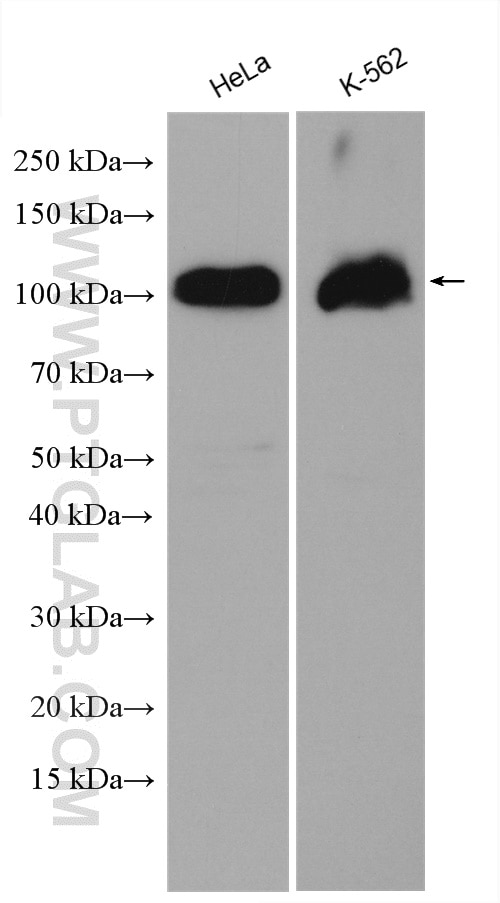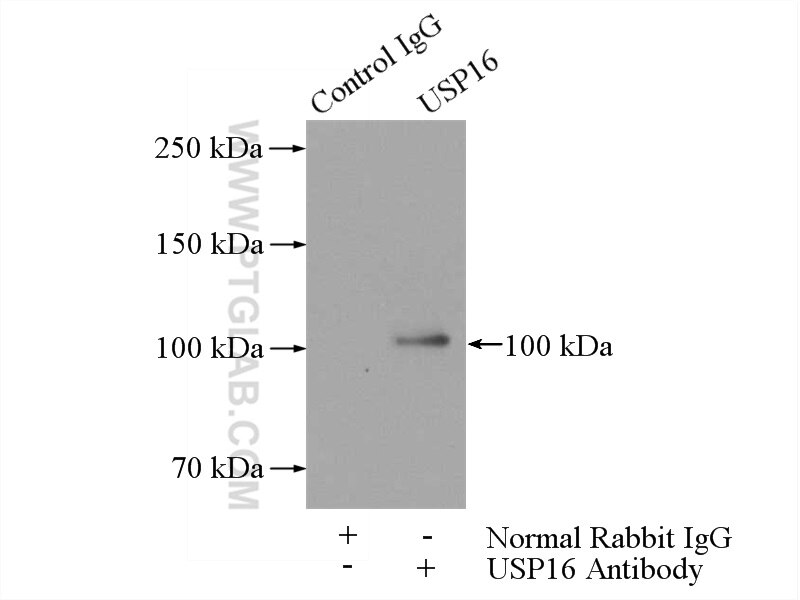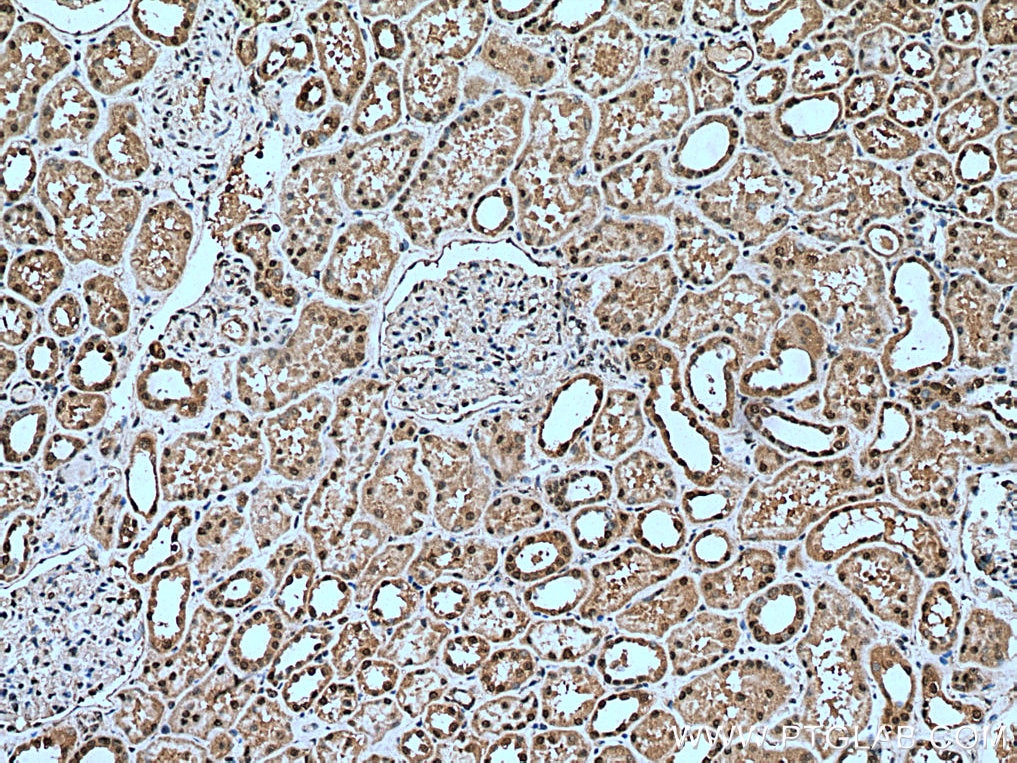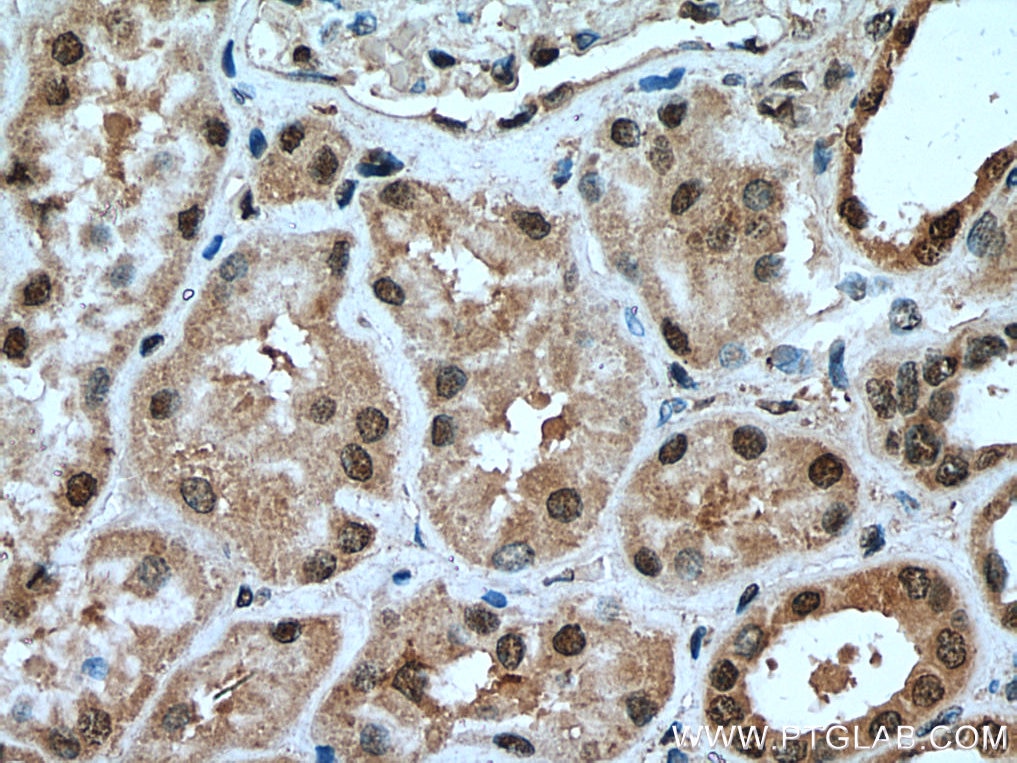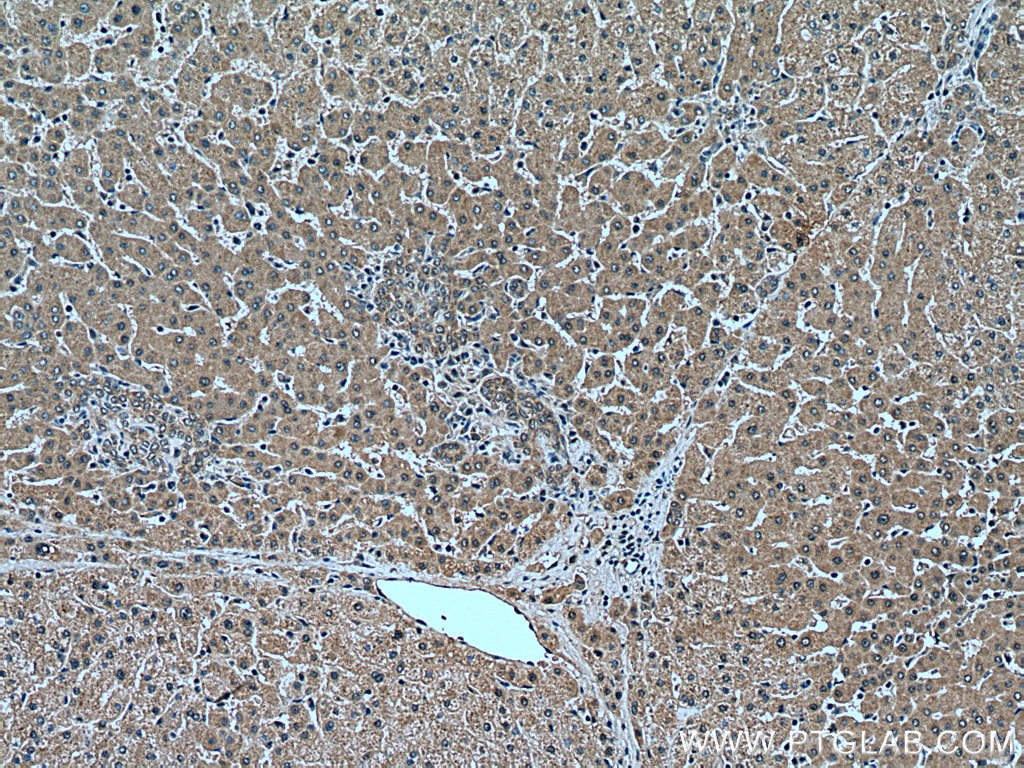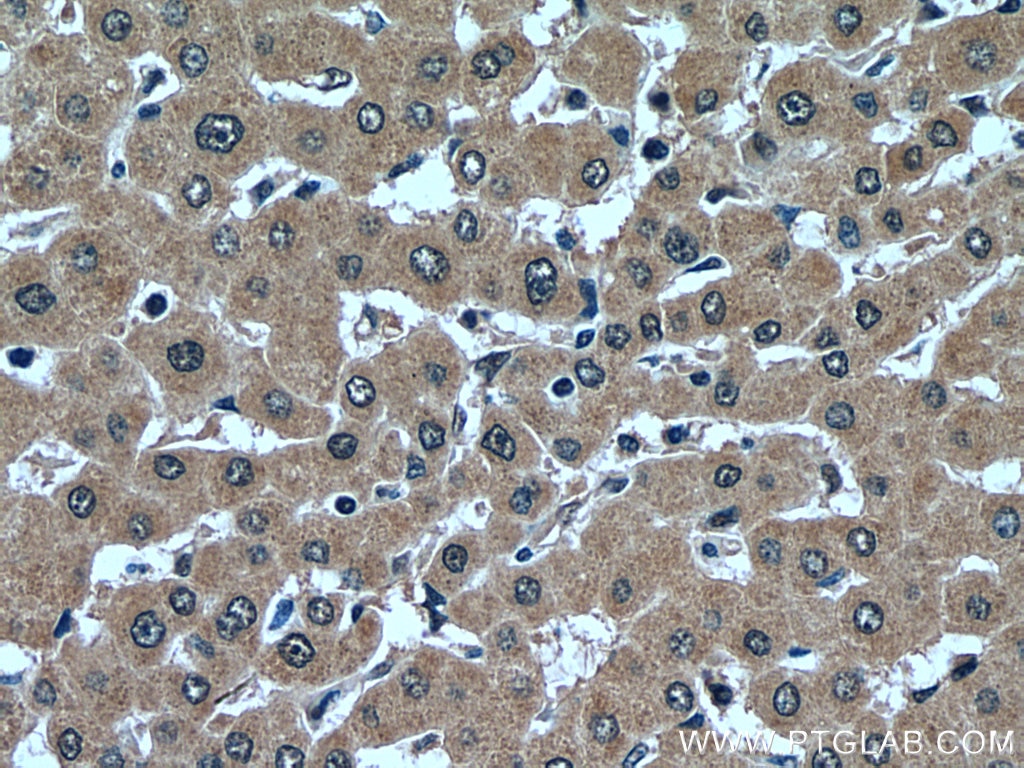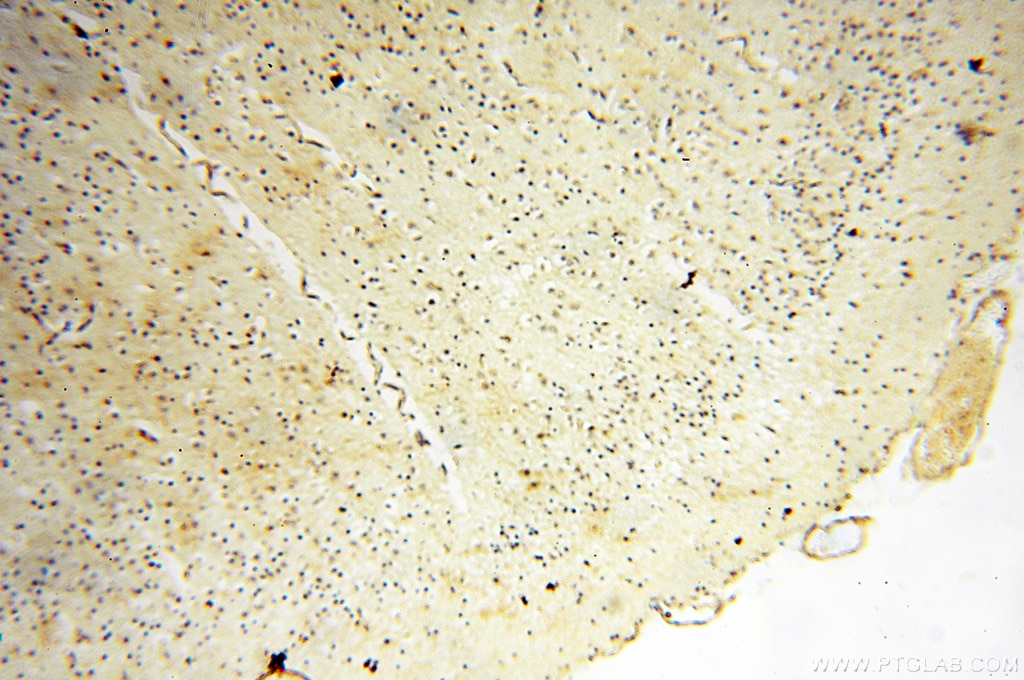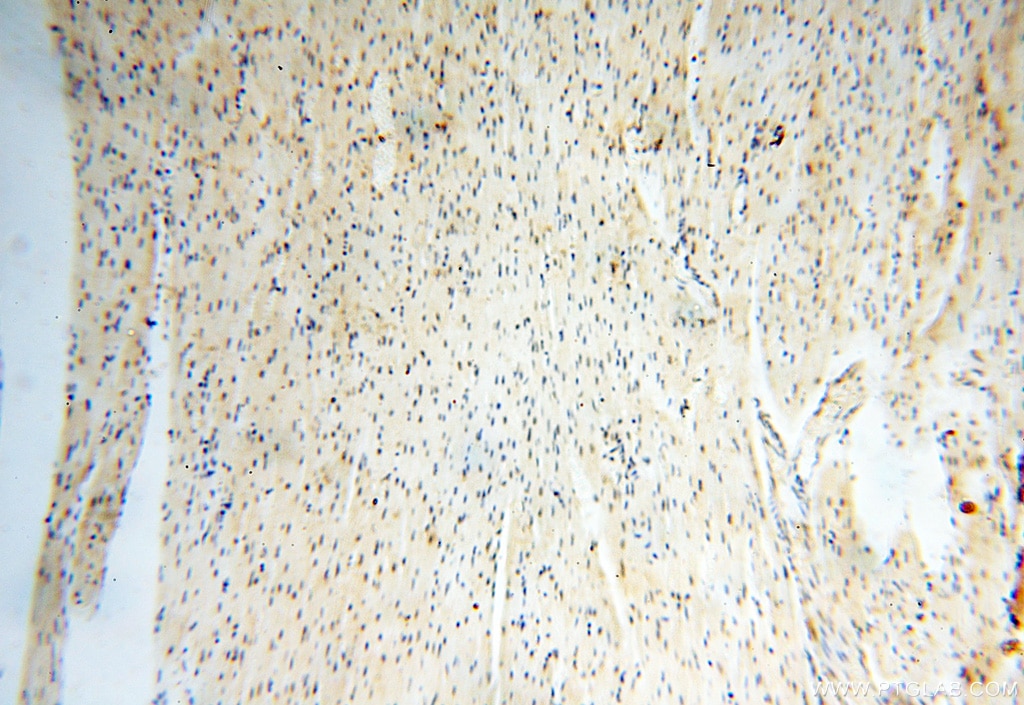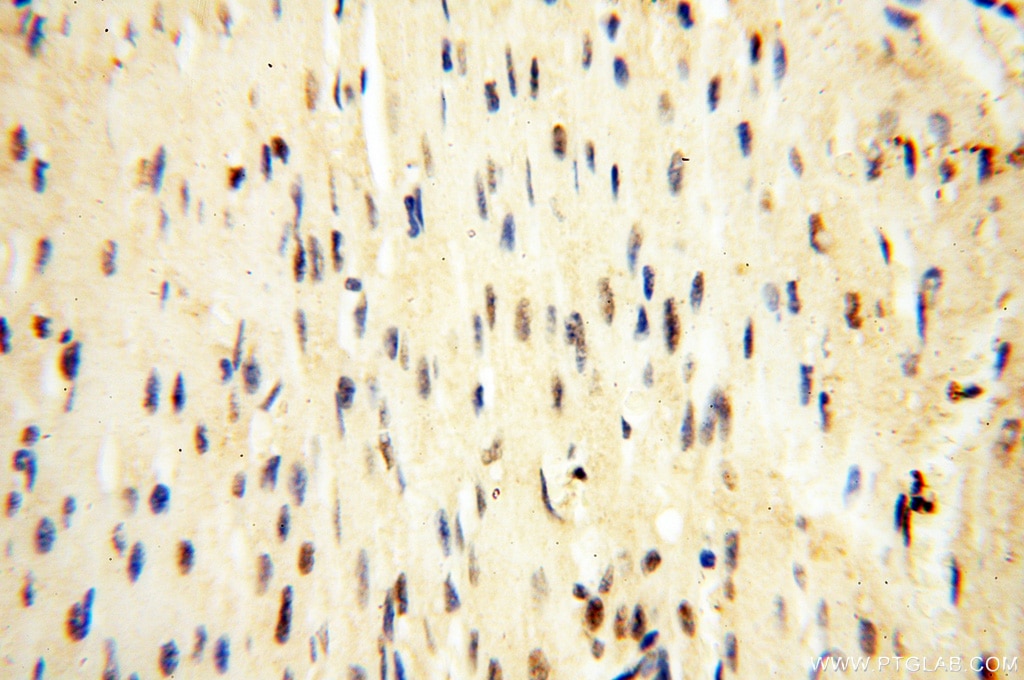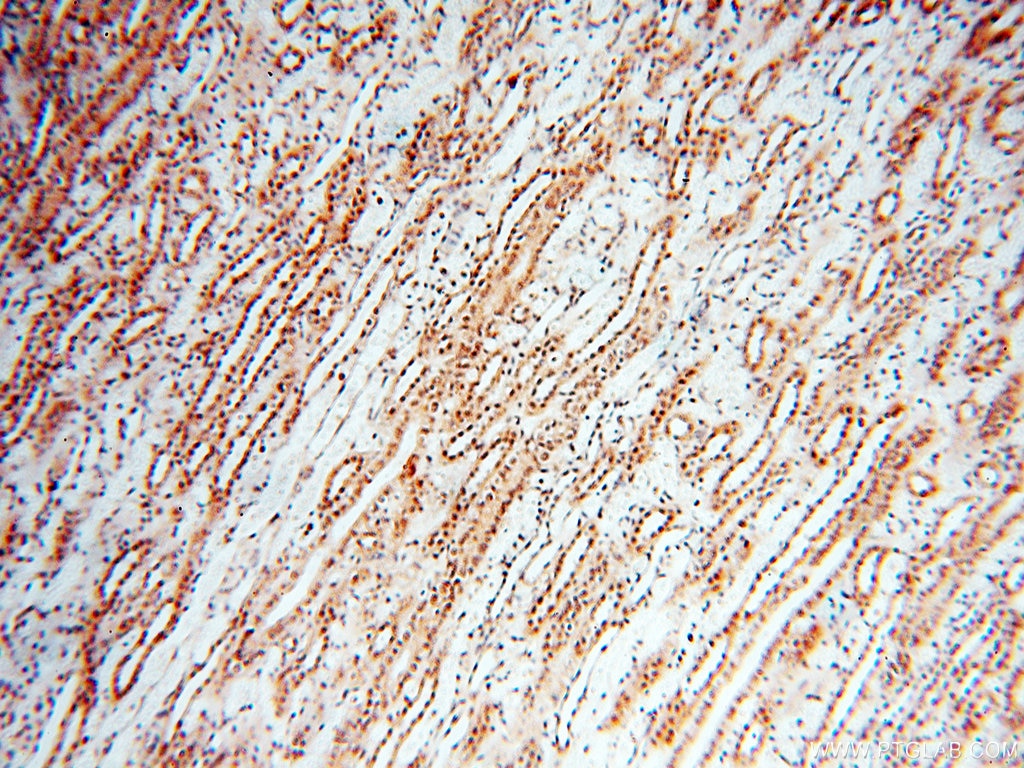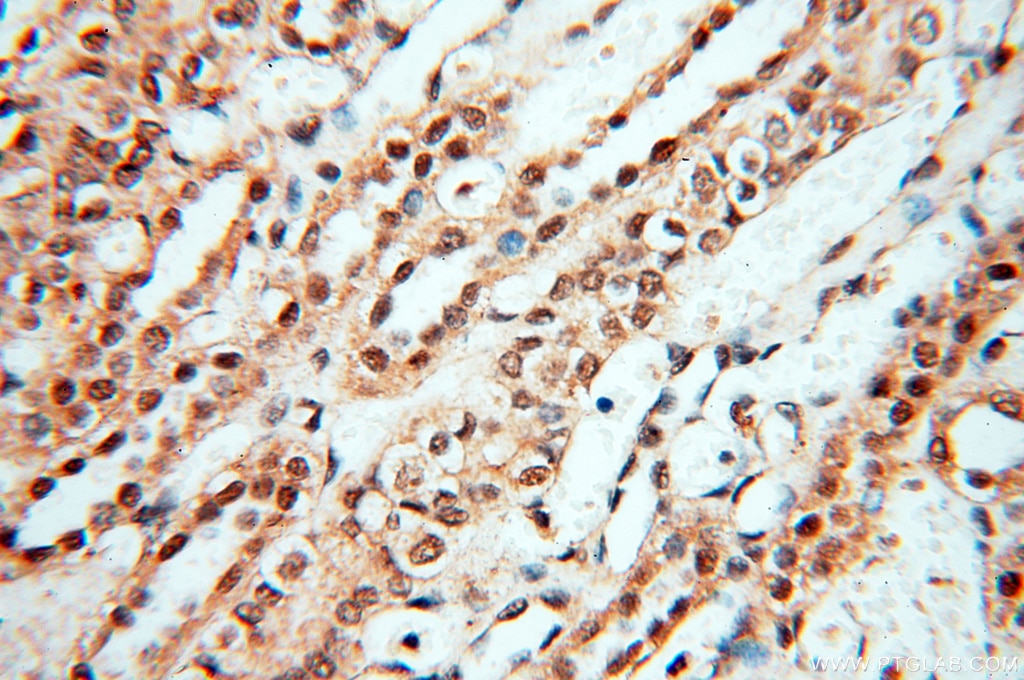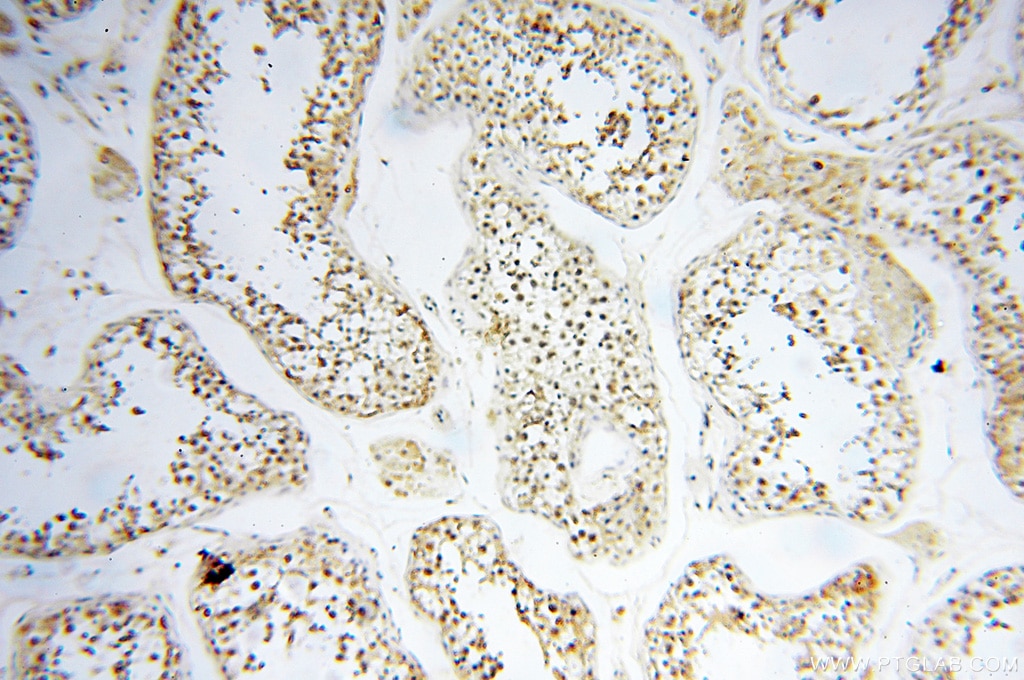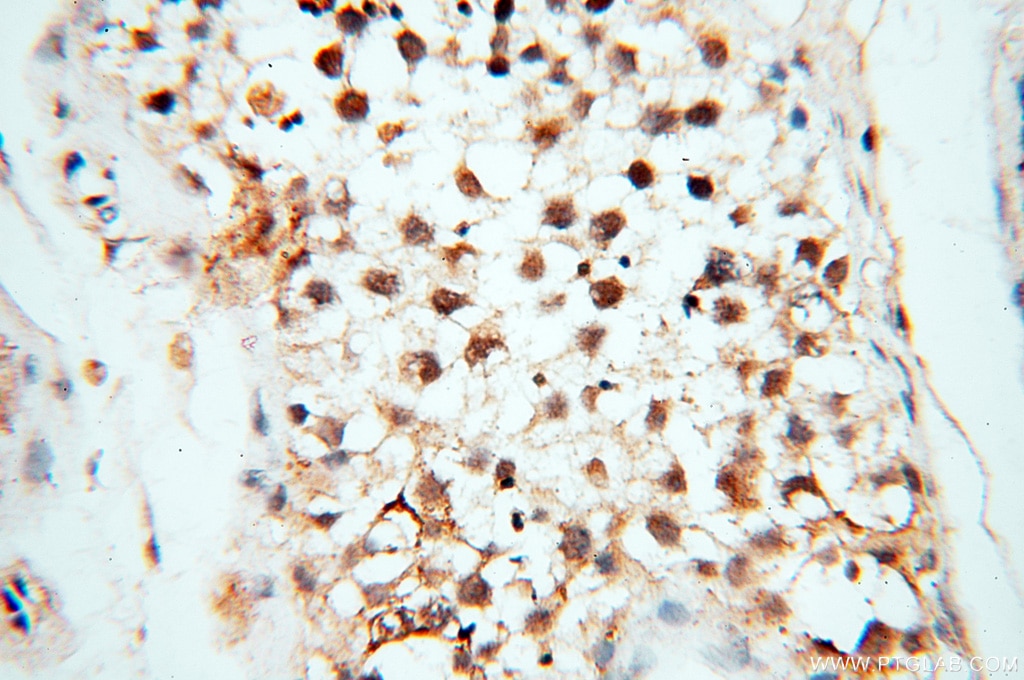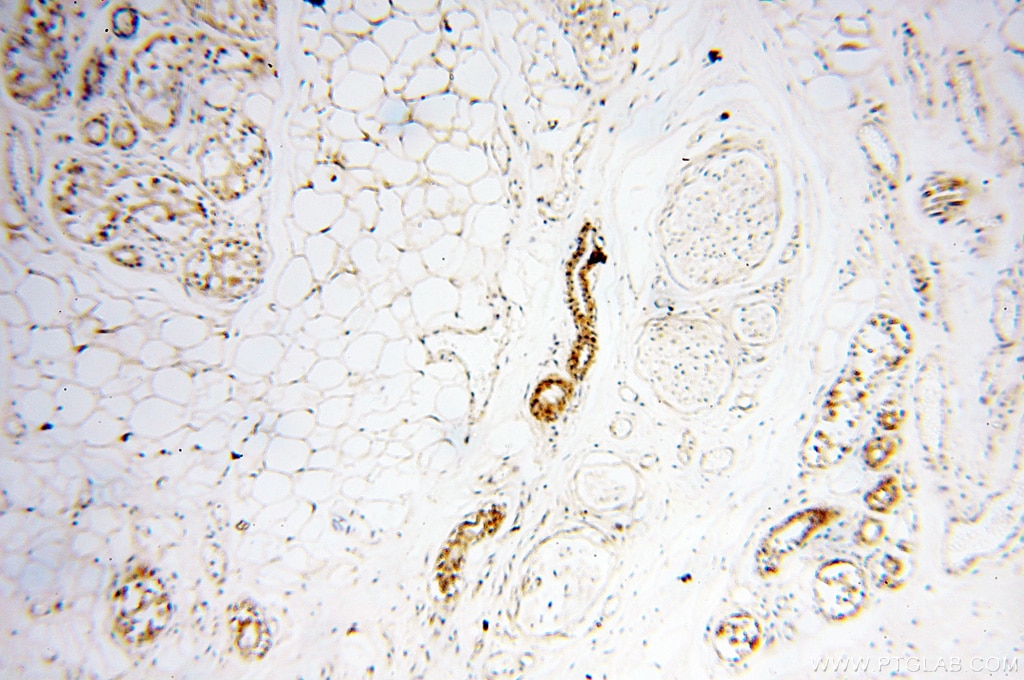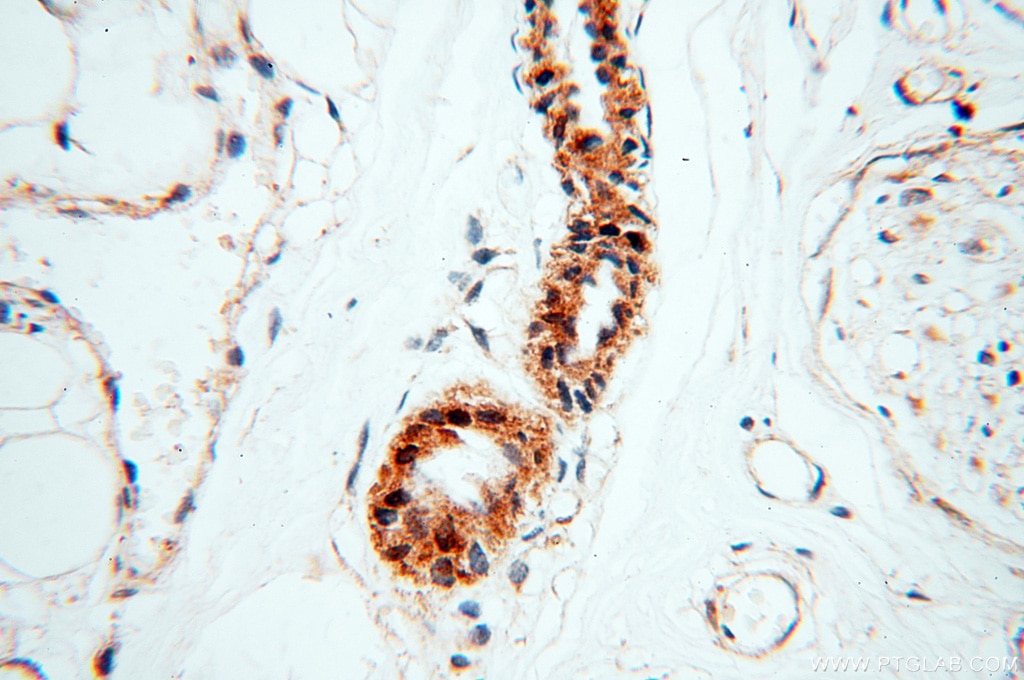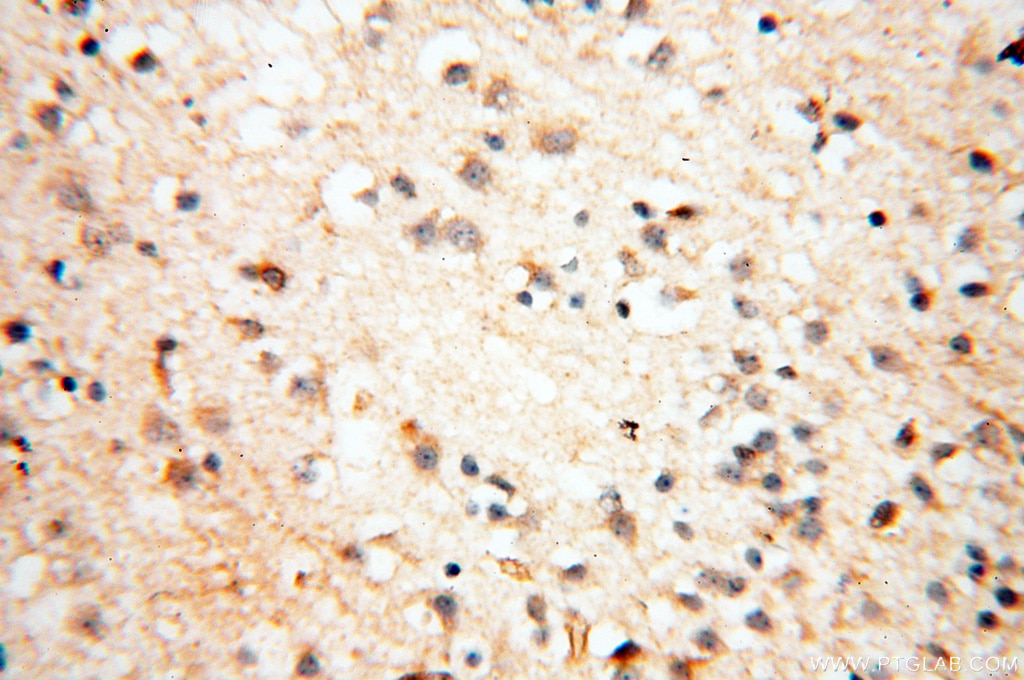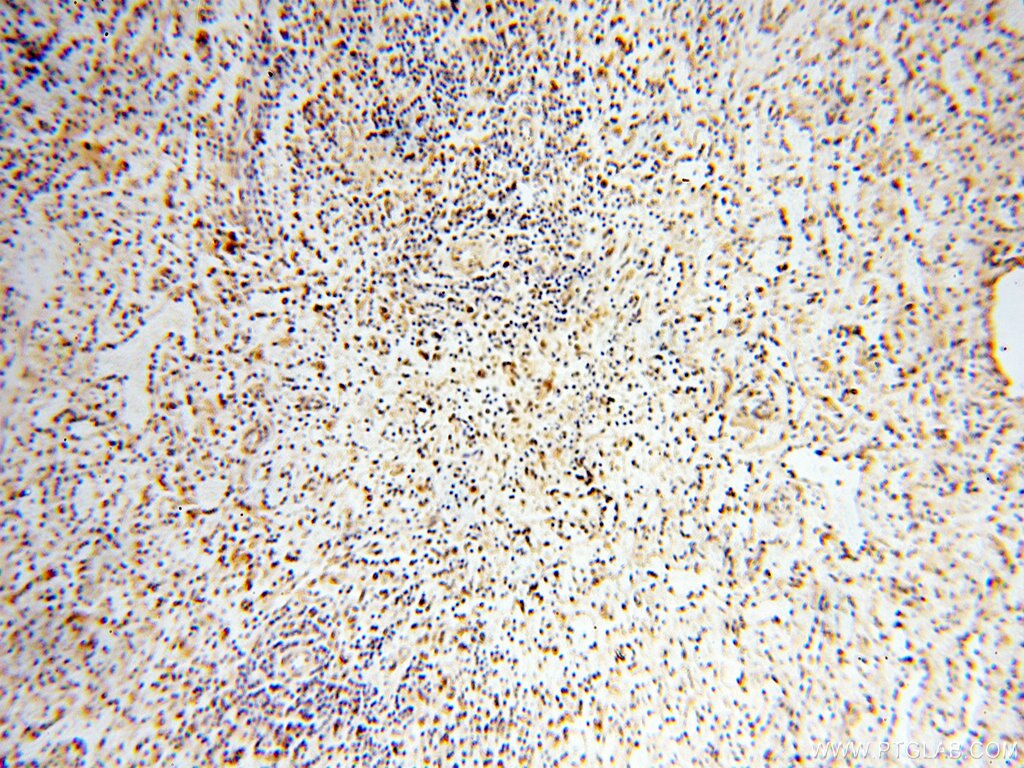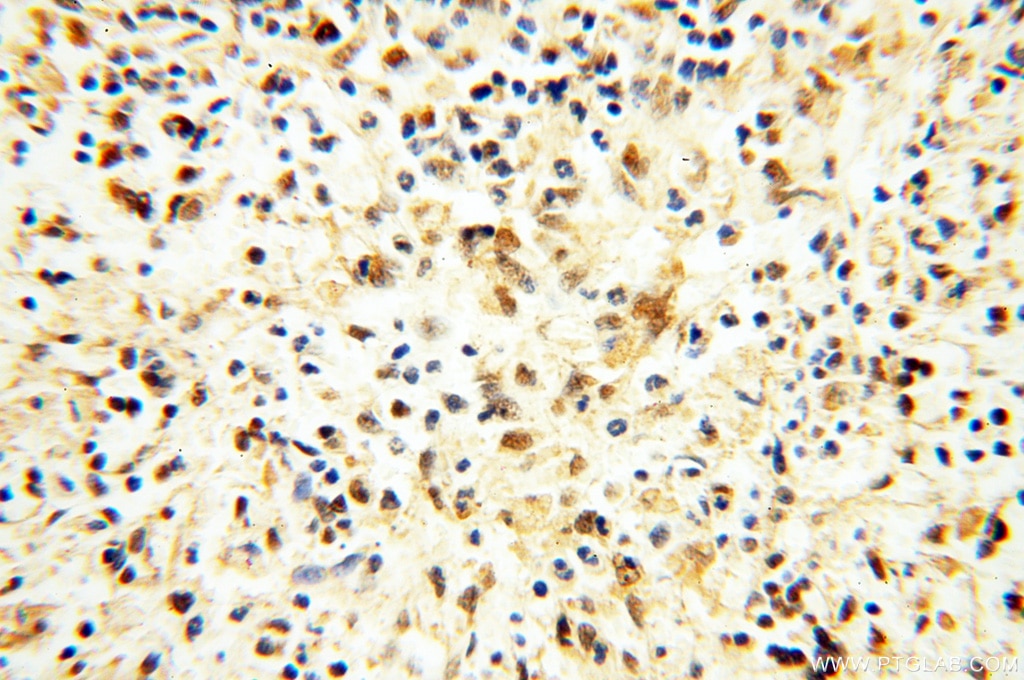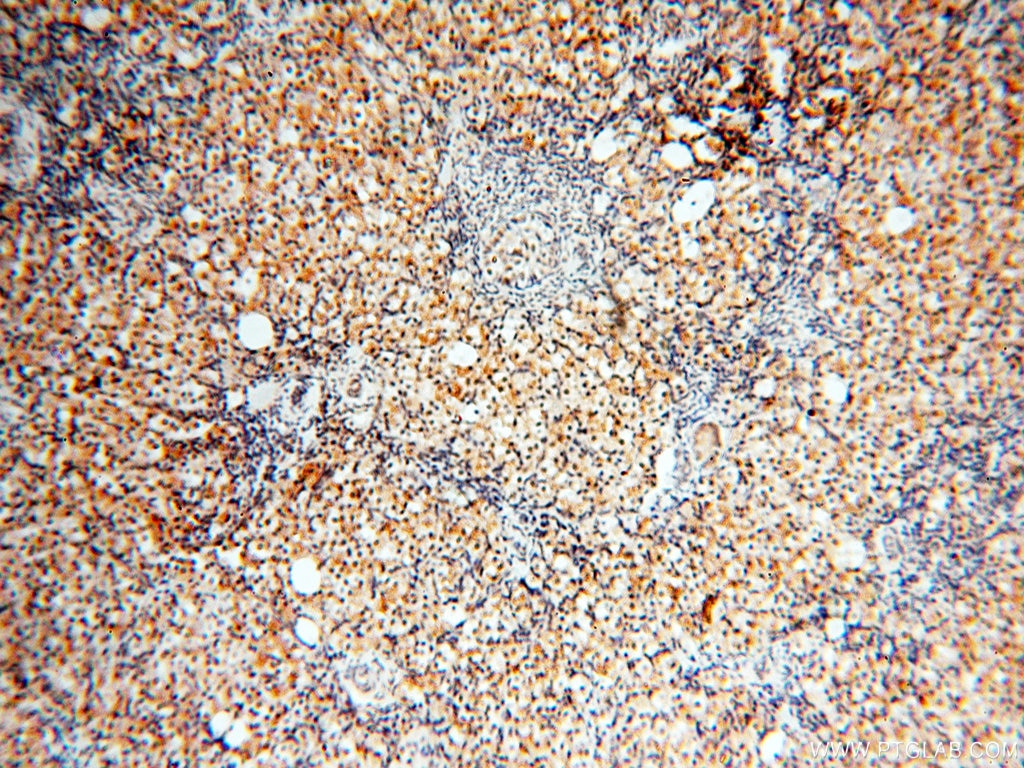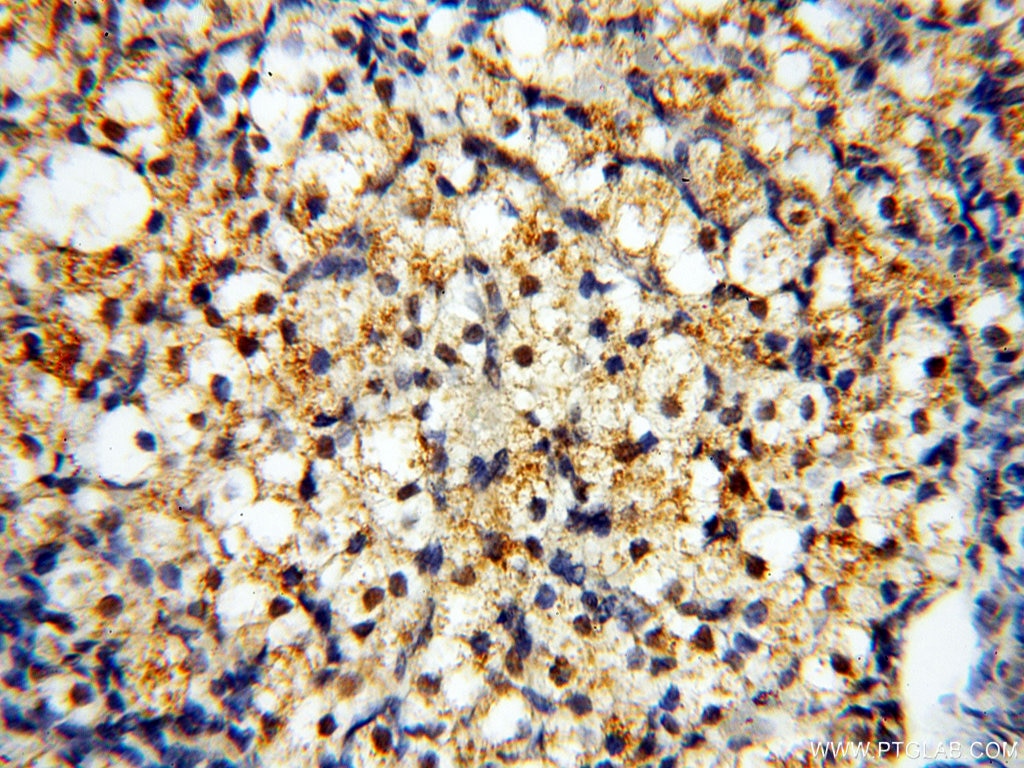Validation Data Gallery
Tested Applications
| Positive WB detected in | HeLa cells, K-562 cells |
| Positive IP detected in | HeLa cells |
| Positive IHC detected in | human liver tissue, human brain tissue, human spleen tissue, human ovary tissue, human kidney tissue, human heart tissue, human testis tissue, human skin tissue Note: suggested antigen retrieval with TE buffer pH 9.0; (*) Alternatively, antigen retrieval may be performed with citrate buffer pH 6.0 |
Recommended dilution
| Application | Dilution |
|---|---|
| Western Blot (WB) | WB : 1:500-1:2000 |
| Immunoprecipitation (IP) | IP : 0.5-4.0 ug for 1.0-3.0 mg of total protein lysate |
| Immunohistochemistry (IHC) | IHC : 1:50-1:500 |
| It is recommended that this reagent should be titrated in each testing system to obtain optimal results. | |
| Sample-dependent, Check data in validation data gallery. | |
Published Applications
| KD/KO | See 3 publications below |
| WB | See 5 publications below |
| IHC | See 1 publications below |
| IF | See 2 publications below |
| IP | See 1 publications below |
| CoIP | See 1 publications below |
Product Information
14055-1-AP targets USP16 in WB, IHC, IF, IP, CoIP, ELISA applications and shows reactivity with human samples.
| Tested Reactivity | human |
| Cited Reactivity | human, mouse |
| Host / Isotype | Rabbit / IgG |
| Class | Polyclonal |
| Type | Antibody |
| Immunogen |
CatNo: Ag4981 Product name: Recombinant human USP16 protein Source: e coli.-derived, PGEX-4T Tag: GST Domain: 1-386 aa of BC030777 Sequence: MGKKRTKGKTVPIDDSSETLEPVCRHIRKGLEQGNLKKALVNVEWNICQDCKTDNKVKDKAEEETEEKPSVWLCLKCGHQGCGRNSQEQHALKHYLTPRSEPHCLVLSLDNWSVWCYVCDNEVQYCSSNQLGQVVDYVRKHASITTPKPEKDNGNIELENKKLEKESKNEQEREKKENMAKENPPMNSPCQITVKGLSNLGNTCFFNAVMQNLSQTPVLRELLKEVKMSGTIVKIEPPDLALTEPLEINLEPPGPLTLAMSQFLNEMQETKKGVVTPKELFSQVCKKAVRFKGYQQQDSQELLRYLLDGMRAEEHQRVSKGILKAFGNSTEKLDEELKNKVKDYEKKKSMPSFVDRIFGGELTSMIMCDQCRTVSLVHESFLDLSL 相同性解析による交差性が予測される生物種 |
| Full Name | ubiquitin specific peptidase 16 |
| Calculated molecular weight | 94 kDa |
| Observed molecular weight | 100-120 kDa |
| GenBank accession number | BC030777 |
| Gene Symbol | USP16 |
| Gene ID (NCBI) | 10600 |
| RRID | AB_2272832 |
| Conjugate | Unconjugated |
| Form | |
| Form | Liquid |
| Purification Method | Antigen affinity purification |
| UNIPROT ID | Q9Y5T5 |
| Storage Buffer | PBS with 0.02% sodium azide and 50% glycerol{{ptg:BufferTemp}}7.3 |
| Storage Conditions | Store at -20°C. Stable for one year after shipment. Aliquoting is unnecessary for -20oC storage. |
Background Information
USP16 (Ubiquitin specific peptidase 16) was originally identified as a DUB of histone H2A which is implicated in cell cycle progression and HOXD10 gene expression (PMID:17914355). The knockout study has reported that depletion of USP16 results in early embryonic lethality in mice (PMID:24784029). Moreover, USP16 mediated the deubiquitination and stabilization of Drp1 through its direct interaction with Drp1 (PMID:37488647).
Protocols
| Product Specific Protocols | |
|---|---|
| IHC protocol for USP16 antibody 14055-1-AP | Download protocol |
| IP protocol for USP16 antibody 14055-1-AP | Download protocol |
| WB protocol for USP16 antibody 14055-1-AP | Download protocol |
| Standard Protocols | |
|---|---|
| Click here to view our Standard Protocols |
Publications
| Species | Application | Title |
|---|---|---|
J Cell Sci A potent nuclear export mechanism imposes USP16 cytoplasmic localization during interphase | ||
Arthritis Res Ther Deubiquitinase USP16 induces gouty arthritis via Drp1-dependent mitochondrial fission and NLRP3 inflammasome activation
| ||
J Cell Sci A potent nuclear export mechanism imposes USP16 cytoplasmic localization during interphase.
| ||
Sci Rep Broad-spectrum ubiquitin-specific protease inhibition as a mechanism for the cytotoxicity of YM155 in cancers | ||
Nat Commun FGF18 alleviates hepatic ischemia-reperfusion injury via the USP16-mediated KEAP1/Nrf2 signaling pathway in male mice
| ||
Rheumatology (Oxford) Overexpression of ubiquitin-specific peptidase 15 in systemic sclerosis fibroblasts increases response to transforming growth factor β. |

